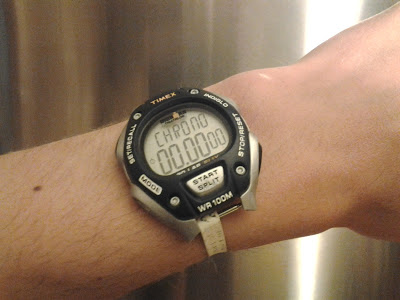Since my win at the Welland Half Iron Triathlon under hot and humid conditions, people have been asking me how I cope with the heat. I’ve always been something of hot weather specialist. My lanky build, moderate sweat rate and pre-race buzz cut (by yours truly) certainly help, but I have another trick.
The brain imposes all kinds of restrictions on the body that cap performance well short of physical potential. This is true of heat tolerance. For example, take this study where cyclists doing a hot, humid time trial performed at a higher level when they were shown falsely low temperature readings. In the words of the authors:
“Deception improved performance in the heat by creating a lower [perceived exertion], evidence of a subtle mismatch between the subconscious expectation and conscious perception of the task demands.”
How can you harness this effect to race well in the heat? Obviously it’s tricky to deceive yourself. Sure, I knew the race would be a scorcher, but the key is that I didn’t fixate on it. In fact, I didn’t even check the weather forecast or the temperature on race day. Contrast this with people who break out in a sweat simply looking at the thermometer before they even step outside. During the race, these people are thinking “omg, it’s 35°C and 99% humidity… I’m headed for a meltdown…”. A self-fulfilling prophecy in the making!
The classic advice for racing is to focus on what you can control (heat acclimatization in training, gear choices, hydration, etc.), and avoid obsessing over external factors. After all, everyone has to face the same conditions and mindset counts for a lot.
That’s not the the only way you can “deceive” your brain; pacing feedback also influences performance. In races, and increasingly in training, I go technologically au naturel—no watch, bike computer, power meter or GPS-enabled sweat-sensing heart rate-monitoring wrist-top supercomputer. I’ve long been an advocate of pacing by “feel”, particularly if you’re unsure of your ability.
 |
| Typical triathlete’s cockpit. Photo cred. |
 |
| When I’m not training au naturel, I use my trusty watch, circa 2000. It’s seen better days. |









